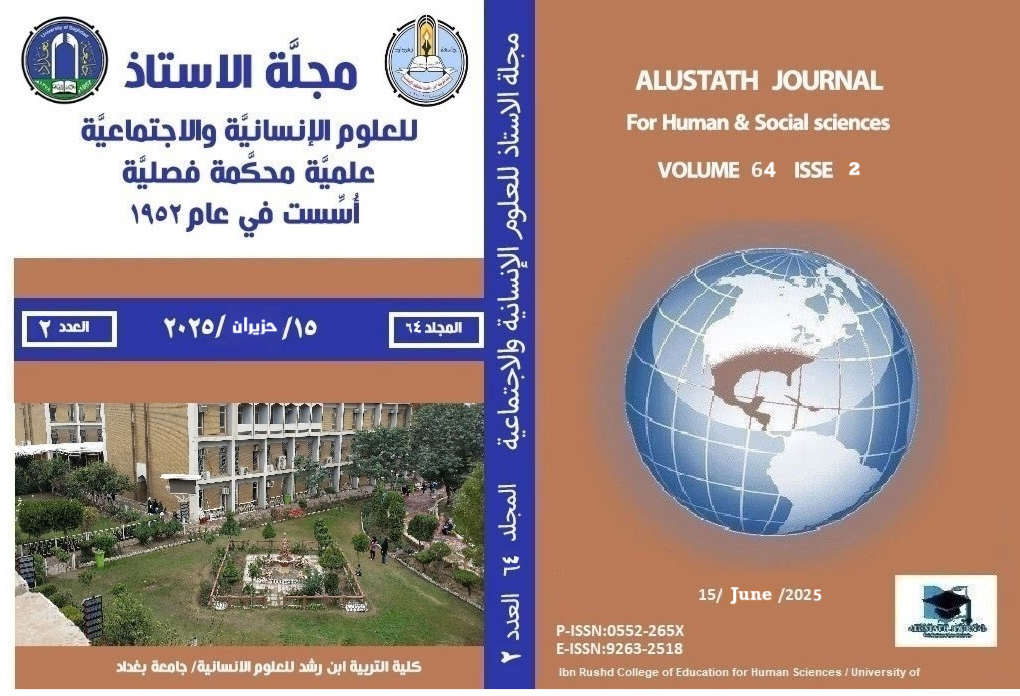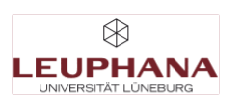An Approach to Advertising through the Words ‘Reality’ and ‘Incident’ in the Koranic Text
DOI:
https://doi.org/10.36473/235sqz86Keywords:
Advertising, Quranic advertising, the terms “reality” and “incident” in Quranic usage.Abstract
The term ‘advertising’ has expanded its field of knowledge by relying on the suggestive image that indicates semantic loading, and that is based on influence, persuasion, reporting and communication. It also expanded its emotional value that is manifested in those motivations that control the individual’s behavior to do an action as a result of the influences s/she experienced. In addition, advertisement, which is based on denotation, is not only a commercial field, but has become a field of knowledge in linguistic and literary studies. It has become a type of discourse that has its own semiotic and pragmatic features, and its ability to communicate with the recipient in order to pass on a message and achieve a certain goal.
In addition to the term advertising, there is the Koranic discourse, which is a directive, indicative discourse, full of advertising expressions that depend on language. This is an important means of persuasion that affects the mind of the recipient more efficiently than words. The advertising rhetorical methods in the Koranic discourse are characterized by their being semantic loaded and their miraculous suggestive meaning. This is so because God Almighty the One who speaks and this is why we chose to study this topic.
Downloads
References
• Ibn Ashur, Muhammad Al-Tahir. (1393 AH / 1984). Al-Tahrir wa Al-Tanwir. Tunis: Tunisian Publishing House.
• Ibn Manzur (d. 711 AH), Muhammad bin Makram bin Ali, Abu Al-Fadl Jamal Al-Din. (n.d.). Lisan Al-Arab, 2nd ed. Beirut, Lebanon: Dar Ihya’ Al-Turath Al-Gharbi and Arab History Foundation.
• Ahmed, Atiyah Suleiman. (2014). Qur’anic Advertising and Mystical Meaning in Light of Cognitive Theory, Conceptual Blending, and Pragmatics (Surat Yusuf as a Model). Cairo: Modern Academy for University Books.
• Al-Asfahani (d. 502 AH), Abu Al-Husayn Ibn Muhammad, known as Al-Raghib. Ed. Safwan Adnan Al-Daoudi. (1412 AH), Al-Mufradat fi Gharib Al-Qur’an, 1st ed. Damascus/Beirut: Dar Al-Qalam, Al-Dar Al-Shamiah.
• Al-Alusi Al-Baghdadi (d. 1270 AH), Abu Al-Fadl Shihab Al-Din Al-Sayyid Mahmoud. (n.d.). Ruh Al-Ma‘ani fi Tafsir Al-Qur’an Al-‘Azim wa Al-Sab‘ Al-Mathani. Beirut, Lebanon: Dar Ihya’ Al-Turath Al-‘Arabi.
• The Eloquence of the Qur’an: Why “Innama Tu‘adun” and Not “In Ma Tu‘adun”?, Al-Raya Website, 2019. https://www.raya.com/2019/06/02
• Boutayeb, Abdelali. (2003). Mechanisms of Advertising Discourse: Part 1. Alamāt Journal, No. 49, Vol. 13.
• Tawfiq, Ahmad Mahmoud Zakariya. (2022). Strategies of Advertising Discourse and Its Manifestations from Qur’an and Sunnah. Harran Ilahiyat Journal, Issue 47, Urfa, Turkey.
• Al-Tha‘labi (d. 427 AH), Imam Abu Ishaq Ahmad. Ed. Abu Muhammad Ibn Ashour, supervised by Nadheer Al-Sa‘idi. (2002). Al-Kashf wa Al-Bayan (Tafsir Al-Tha‘labi), 1st ed. Beirut, Lebanon: Dar Ihya’ Al-Turath Al-‘Arabi.
• Al-Hanbali (d. 880 AH), Abu Hafs Umar bin Ali bin ‘Adil Al-Dimashqi. Eds. Adel Ahmad Abdul-Mawjood & Ali Muhammad Muawwad. (1998). Al-Lubab fi ‘Ulum Al-Kitab, 1st ed. Beirut, Lebanon: Dar Al-Kutub Al-‘Ilmiyyah.
• Al-Khayrallah, Zaeem. (2021). Advertising in the Holy Qur’an. Dinpress Agency. https://dinpresse.net
• Al-Razi, Imam Muhammad Fakhr Al-Din ibn Al-Allama Diya’ Al-Din Umar (d. 604 AH). (1981). Tafsir Al-Kabir wa Mafatih Al-Ghayb, 1st ed. Beirut, Lebanon: Dar Al-Fikr.
• Al-Zamakhshari (d. 538 AH), Jarallah Abu Al-Qasim Mahmoud bin Umar. Eds. Adel Ahmad Abdul-Mawjood & Ali Muhammad Muawwad. (1998). Al-Kashshaf, 1st ed. Riyadh: Obeikan Library.
• Zaidan, Abdul Karim. (2001). Usul Al-Da‘wah, 9th ed. Beirut: Al-Resalah Foundation.
• Al-Saqi, Muhammad. (2020). Advertising Discourse and Political Propaganda. Issue 7, Morocco: Alamāt Journal.
• Sayyid Qutb. (2006). Scenes of the Day of Judgment in the Holy Qur’an, 16th ed. Cairo: Dar Al-Shorouk.
• Al-Suyuti (d. 911 AH), Abdul Rahman bin Abi Bakr Jalal Al-Din. Ed. Muhammad Abu Al-Fadl Ibrahim. (1974). Al-Itqan fi ‘Ulum Al-Qur’an. Egyptian General Book Organization.
• Al-Shanqeeti, Maryam. (1440 AH). Advertising Discourse in Literary Texts: A Pragmatic Study. Riyadh: Dar Al-Faisal.
• Al-Sheikhly, Bahjat Abdulwahid. (2001). The Eloquence of the Qur’an in Brief Syntax and Interpretation. 1st ed. Amman, Jordan: Dandis Library.
• Al-Sabuni (d. 2021), Muhammad Ali. (1981). Safwat Al-Tafasir, 4th ed. Beirut: Dar Al-Qur’an Al-Kareem.
• Saleh, Bahjat Abdulwahid. (1993). Detailed Parsing of the Recited Book of Allah, 1st ed. Amman, Jordan: Dar Al-Fikr.
• Al-Saghir, Muhammad Hussein Ali. (2000). Phonetics in the Qur’an, 1st ed. Beirut, Lebanon: Arab Historian House.
• Al-Tabataba’i, Sayyid Muhammad Hussein. (1997). Al-Mizan fi Tafsir Al-Qur’an, 1st ed. Beirut, Lebanon: Al-A‘la Foundation.
• Al-Tabarsi (d. 548 AH), Amin Al-Islam Abu Ali Al-Fadl bin Al-Hasan. (2006). Majma‘ Al-Bayan fi Tafsir Al-Qur’an, 1st ed. Beirut: Dar Al-Murtadha.
• Abdulaziz, Abdulaziz Saber. (2022). Advertising Expressions in the Qur’an: A Feminist Discourse Model. Annals of the Faculty of Arabic Language – Al-Azhar University, Egypt, Issue 26, Vol. 2.
• Al-Usayli, Abdulaziz bin Ibrahim. (2023). Encyclopedic Dictionary of Applied Linguistics Terms, 1st ed. King Salman Global Academy for Arabic Language.
• Al-Firuzabadi (d. 817 AH), Muhammad bin Ya‘qub. (n.d.). Al-Qamus Al-Muhit. Beirut: Al-Resalah Foundation.
• Al-Qurtubi, Abu Abdullah Muhammad bin Ahmad Al-Ansari. Eds. Ahmad Al-Bardouni & Ibrahim Atfayesh. (1964). Al-Jami‘ li Ahkam Al-Qur’an, 2nd ed. Cairo: Egyptian Book House.
• Lafta, Dr. Qusay Ibrahim. (2020). Advertising Discourse in the Qur’an (Surat Al-Waqi‘ah as a Case Study). Beirut, Lebanon: International Journal of Humanities and Social Sciences, Issue Muhammad Khidr, Muhammad Zaki. (2012). Dictionary of Qur’anic Words, 2nd ed.
• Al-Makhzoumi, Mahdi. (1986). In Arabic Grammar: Critique and Direction, 2nd ed. Beirut, Lebanon: Dar Al-Raed Al-‘Arabi.
• Al-Marrakshi, Lamia. (2021). A Semiotic Study of Selected Verses from Surat Al-Baqarah. Erbil, Iraq: Al-Hiwar Magazine. https://alhiwarmagazine.blogspot.com/2019/04/blog-post_33.html
• Nour Al-Din, Halim. (2017). Types of Advertising Discourses in Print Journalism, supervised by Boujemaa Chetouane. Master’s Thesis, Faculty of Arts, Mouloud Mammeri University, Algeria.
• Hjelmslev, Louis. Trans. Youssef Iskandar. (2018). Introduction to Language Theory, 1st ed. Beirut, Lebanon: University of Kufa.
• Al-Wahidi (d. 468 AH), Abu Al-Hasan Ali bin Ahmad bin Muhammad. Ed. Muhammad bin Mansour Al-Fayez. (2010). Al-Tafsir Al-Basit. Riyadh (digitally published by contributors).












